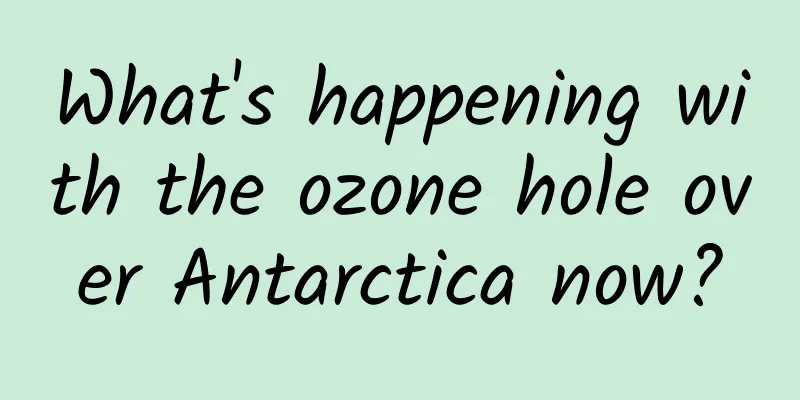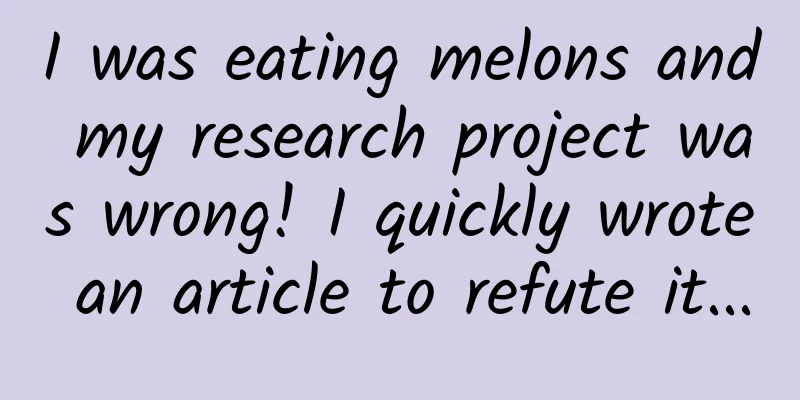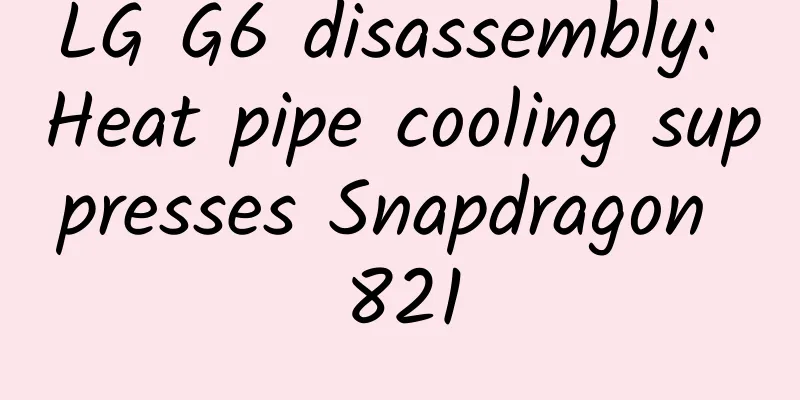What's happening with the ozone hole over Antarctica now?

|
Author: Wei Ke On May 16, 1985, the famous magazine Nature published an article by Joseph Farman of the British Antarctic Expedition and his colleagues Brian Gardiner and Jon Shanklin. They pointed out that serious ozone depletion had been occurring at the Halley Bay Observatory in Antarctica since the mid-1970s. By the early 1980s, the average ozone depletion in October exceeded 40%. From then on, the Antarctic ozone hole, a serious environmental crisis, came into the global eye. Subsequently, NASA checked the satellite observation data and was surprised to find that a huge ozone hole had formed over the Antarctic. Of course, this is not a real "hole", but the ozone concentration in it is much lower than the surrounding area. Compared with the surrounding area, it is like a "hole" has formed. They found that the area of this "hole" has reached thousands of square kilometers, which is larger than the land area of the United States. After the 1980s, the Antarctic ozone hole occurred seasonally almost every year, and its area became larger and larger. In October 1992 and 1993, ozone depletion was very serious, and the ozone concentration in some areas of the stratosphere dropped by 99%. In December 1998, the World Meteorological Organization (WMO) observed that the ozone hole over Antarctica exceeded 10 million square kilometers for nearly 100 consecutive days, and the maximum area in September of the same year reached a record high of 27.9 million square kilometers (September 19, 1998). The largest area of the Antarctic ozone hole appeared on September 9, 2000, with an area of 29.9 million square kilometers. Such a large-scale ozone hole can endanger Tierra del Fuego, the southernmost tip of the South American continent, and the southern part of Santa Cruz, Argentina. Ozone holes may occur not only over Antarctica, but also in the Northern Hemisphere, but the frequency is relatively low, about once every 10 years. Historically, the Arctic has seen large ozone holes in 1997 and 2011. In March 2020, a larger ozone hole formed in the Arctic again. This time, the area of low ozone values reached the size of three Greenlands, about 6 million square kilometers, of which more than 1 million square kilometers met the ozone hole standard (total ozone value below 220DU). This shows that the reduction in total ozone concentration is global. UV barrier: the ozone layer The ozone layer is a life-saving umbrella. Although ozone is an important pollutant near the ground, ozone in the upper atmosphere is a protective umbrella for life on Earth. The ozone layer can absorb most of the solar ultraviolet rays that are harmful to humans , mainly a part of UV-A (wavelength 320~400nm), most of UV-B (wavelength 280~320nm) and all of UV-C (wavelength 200~280nm). UVB is called erythema effect ultraviolet rays and is the main factor causing skin cancer and cataracts. UVA is also called melasma effect ultraviolet rays, which is the nemesis of skin whitening and the main radiation that causes skin tanning, aging and wrinkles. According to current research, it is also one of the causes of skin cancer. UVC is also called short-wave sterilizing ultraviolet rays, which can destroy the DNA structure of life. It is the most dangerous ultraviolet rays. Ultraviolet germicidal lamps use UVC to sterilize air and food. Therefore, the role of ozone in the environment is summarized as "Buddha in the sky and devil on the ground." The ozone layer has only been around for about 600 million years. Prior to this, the ultraviolet rays in sunlight shone unimpeded on the surface of the earth. Under the irradiation of short-wave ultraviolet rays UVC, no signs of life could be seen on the surface of the earth. Therefore, 600 million years ago, life was crawling in the deep sea and evolving very slowly. After the ozone layer was formed about 600 million years ago, the ocean surface and land became safe, opening up the field for the evolution of life. About 540 million years ago, the magnificent "Cambrian Explosion" occurred on the earth. All kinds of creatures suddenly emerged on the earth. Life evolved from the deep sea to the shallow sea, and then from the shallow sea to the land. The speed of evolution accelerated, which led to the later dinosaurs and today's humans. The stability of the ozone layer is related to the health of life on Earth. The appearance of an ozone hole will significantly increase the intensity of UV-B radiation reaching the surface, causing serious harm to human health and the ecological environment. According to analysis, if stratospheric ozone decreases by 1%, the global incidence of cataracts will increase by 0.6% to 0.8%, and the number of people blinded by cataracts will increase by 10,000 to 15,000 people each year; if the ozone concentration decreases by 10%, the incidence of non-malignant skin tumors will increase by 26%, and the human immune system will be weakened. In addition, UV-B will destroy the chlorophyll of plants, affect plant photosynthesis, and reduce crop yields. Therefore, the discovery of the ozone hole caused a global sensation, and global work on the protection of the ozone layer began to enter the fast lane. Destruction and protection of the ozone layer Since the 1970s, the scientific community has clearly pointed out that chlorofluorocarbons (CFCs) emitted by human activities will cause serious ozone depletion. These ozone-depleting substances (ODS substances) are very stable near the ground and are widely used in large central air conditioners, household air conditioners, car air conditioners, refrigerators and other refrigeration equipment, as well as in polyurethane (PU) rigid foam blowing agents, extractants, solvents, dry cleaning agents, ordering agents, aerosol insecticide propellants, etc. However, when they are released into the atmosphere, they are exposed to ultraviolet rays in the stratosphere and release free Cl particles, which can act as catalysts to destroy the ozone layer. It is estimated that one Cl ion can destroy 100,000 ozone molecules. Paul Crutzen, F. Sherwood Rowland and Mario J. Molina, who discovered the mechanism of ozone depletion, also won the 1995 Nobel Prize in Chemistry for this. In order to protect the ozone layer, the international community adopted the Vienna Convention for the Protection of the Ozone Layer in 1985 and the Montreal Protocol on Substances that Deplete the Ozone Layer in 1987, which restricted the production, sale and use of eight substances that seriously damage the ozone layer on a global scale, including five chlorofluorocarbons and three halons. After the adoption of the Montreal Protocol, in order to speed up the process, include more developing countries and expand the types of banned compounds, the London Amendment (June 1990), the Copenhagen Amendment (November 1992), the Vienna Adjustment (December 1995), the Montreal Amendment (1997), the Beijing Amendment (November 1999), etc. were adopted successively. This made the Montreal Protocol form "common but differentiated responsibilities", treating developing and developed countries according to their respective situations. Developed countries took the lead in taking action and provided financial and technical support to developing countries to enhance the capabilities of developing countries, thereby ultimately achieving joint action. This initiative made the Montreal Protocol the first national environmental convention that stipulates different obligations for developed and developing countries, and also made the Montreal Protocol the first agreement ever reached by all countries in the world. Former UN Secretary-General Kofi Annan praised the Montreal Protocol as "the single most successful international agreement to date." In the more than 10 years since the signing of the agreement, more than 85% of ozone-depleting substances have been eliminated. Since 2000, as humans have reduced the damage to the ozone layer, the self-repair function of the atmosphere has begun to play a role, and the situation of the ozone hole that has been growing has stopped deteriorating and entered a bottoming-out rebound phase. On June 30, 2016, Professor Susan Solomon, a famous atmospheric chemist and climatologist from the Department of Earth, Atmospheric and Planetary Sciences at the Massachusetts Institute of Technology, and others published an article in the famous journal Science, reporting a good news to the world: the Antarctic ozone hole is recovering . This is seen as the first ray of hope on the road to "healing" the Antarctic ozone hole. Since 1989, a scientific assessment report on global ozone layer depletion has been published every four years. According to the latest assessment, since the implementation of the Montreal Protocol, countries and regions around the world have actively adopted substitutes and gradually phased out ozone-depleting substances (ODS) to reduce ozone layer depletion. The total chlorine concentration of ODS has dropped by more than 10% from the peak of 3660ppt (the number of molecules of this gas per trillion gas molecules in dry air) in 1993, and the total bromine concentration has also dropped by more than 11% from 22.0ppt in 1998. The long road to ozone layer recovery Thanks to the joint efforts of the world, Antarctic ozone has recovered significantly, and the polar stratospheric ozone hole has further recovered. Since 2000, the polar stratospheric ozone content has increased by 1% to 3% every 10 years. According to the prediction of numerical simulation, the global average total ozone will return to the 1980 level before 2050, while the Antarctic ozone hole will not return to the 1980 level until around 2060. By around 2100, the Antarctic ozone layer will return to the 1960 level, and the ozone hole will completely disappear at that time. The reason why the ozone layer is recovering so slowly is mainly because the ODS substances that are the culprits of the atmospheric ozone layer destruction have an extremely long average lifespan in the atmosphere . For example, the lifespan of CFC-11 is 50 years, while the lifespan of CFC-12 is 100 years, and that of CFC-115 is as long as 1020 years. Therefore, they will continue to destroy the atmospheric ozone layer for a considerable period of time in the future, and their concentrations will still be much higher than the levels before the atmospheric ozone layer was significantly depleted. In addition, people should be aware that the recovery of the atmospheric ozone layer involves many complex physical, chemical and dynamic processes in the atmosphere, and is a complex scientific issue. This makes the recovery process of the atmospheric ozone layer very complicated and carries a lot of uncertainty. Therefore, it is necessary to continuously strengthen the control of ozone-depleting substances. However, "disease comes like a mountain falling, and disease goes like pulling a thread." The road to the recovery of the ozone layer is not smooth, and there will be various repetitions. For example, 2015 was an exception. The area of the ozone hole was relatively large that year, reaching a maximum of 28.2 million square kilometers on October 2. The size of the ozone hole is also affected by other factors, such as volcanic eruptions, El Niño, global warming, and changes in stratospheric atmospheric circulation. September and October of each year are the months with the largest area of the Antarctic ozone hole and the most serious loss. On October 8, 2022, the area of the Antarctic ozone hole reached 24 million square kilometers, and the lowest central value on October 1 reached 97 DU, which is less than 1/3 of the normal value. It can be seen that the Antarctic ozone depletion is still very serious . Although it will take some time for the ozone layer to fully recover, we are already on the road to recovery. Using simulations from the Earth System Model, researchers pointed out that if the world had not controlled ODS since the 1980s, global ozone depletion would be very serious, and the ozone concentration in the Arctic would drop to 50-100 DU, far lower than the concentration level in 1960 (500 DU). A serious Arctic ozone hole would appear, the intensity of ultraviolet radiation on the earth's surface would double, and the chance of skin cancer would soar. The Antarctic ozone hole is a major environmental problem in human history. Through the work of protecting the ozone layer, we have realized that humans and the natural environment are an organic whole. Just as fish cannot live without water, water cannot live without lively fish. Our social development and technological progress should not come at the cost of environmental damage, but we should adhere to the concept of "growing together with nature", protect the green mountains and clear waters, win the "Earth Defense War" again and again, and guard and protect our precious home on which we depend for survival. This article is a work supported by Science Popularization China Starry Sky Project Author: Wei Ke Reviewer: Huangfu Jingliang, typhoon expert at the Institute of Atmospheric Physics, Chinese Academy of Sciences Produced by: China Association for Science and Technology Department of Science Popularization Producer: China Science and Technology Press Co., Ltd., Beijing Zhongke Xinghe Culture Media Co., Ltd. |
<<: Some elephants are killed for their tusks, but many more starve to death for their molars. Why?
>>: Why do birds make different calls?
Recommend
The most practical seed user operation method
I have been wanting to talk about the seed user o...
Dapeng Education-AI Case Improvement Course
Dapeng Education-AI Case Enhancement Course Resou...
A complete guide to community operation
Transaction-based communities can be roughly divi...
618 headline traffic forecast and advertising suggestions!
618 headline traffic estimation & delivery su...
Don’t do these things within 30 minutes before doing nucleic acid testing!
#Don't drink hot water within 30 minutes befo...
"Healthy eating" series | Is it easier to gain weight in summer? 8 ways to help you stay away from obesity
The hot weather in summer and the reduction of ou...
Experiments to ignite user growth: A/B testing best practices
In order to achieve scientific growth in the seco...
How much does it cost to invest in Anshan Sports Mini Program?
How much does it cost to attract investment in An...
iQIYI Dream VR all-in-one machine: a flagship benchmark for entry-level 1,000 yuan, allowing the public to experience the charm of VR
When is the first year of VR? When will the VR ma...
IDC report: React Native changes the rules of the game for hybrid mobile app development
[51CTO.com Quick Translation] The JavaScript fram...
This is the most common model of user operation. Come and take a look. It is written in great detail!
As an operator , you must have done this: invite ...
The romance of the universe will be captured: In 2061, we may see Halley's Comet again
Comet McNaught in the Pacific Ocean. This image w...
Smart autumn harvest | Identify compound fertilizers and distinguish true from false at the speed of light
Produced by: Science Popularization China Author:...
Experience in attracting new customers through marketing activities
Many activities seem to have been done, and time ...









